MOE issues approval for NSYSU to continue establishing School of Post-Baccalaureate Medicine
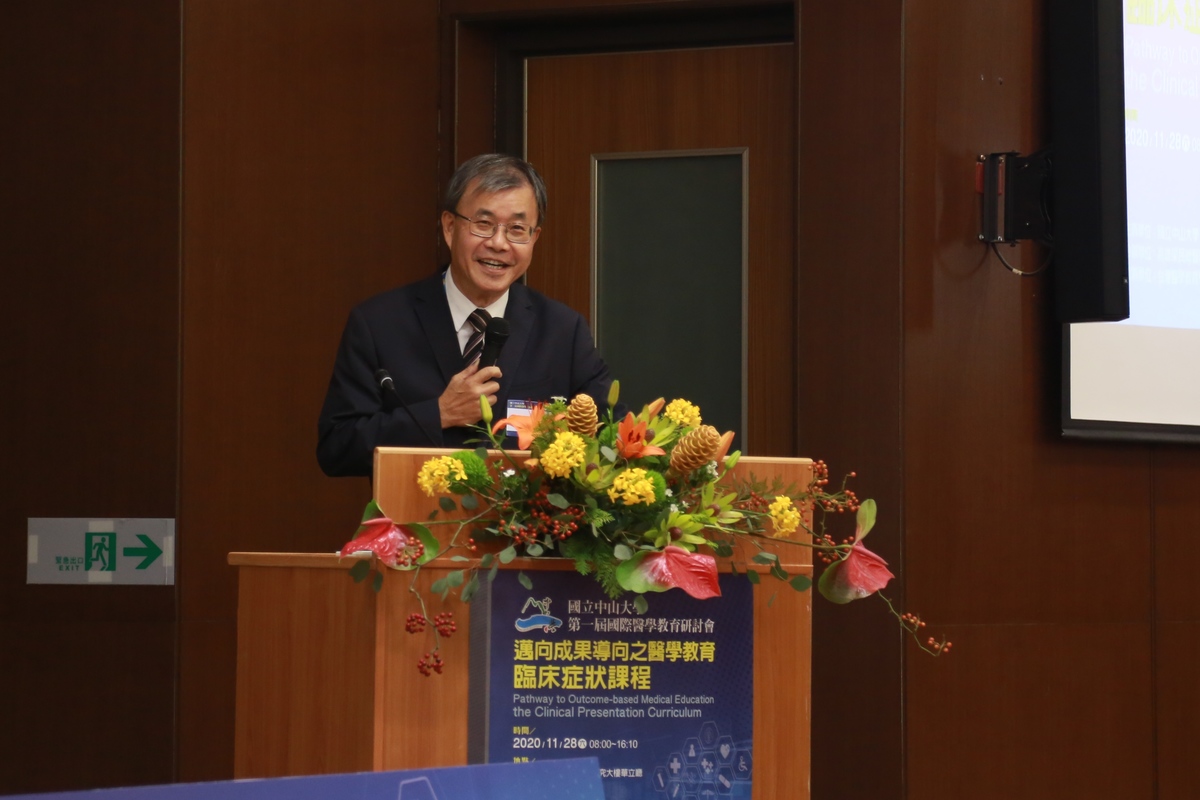
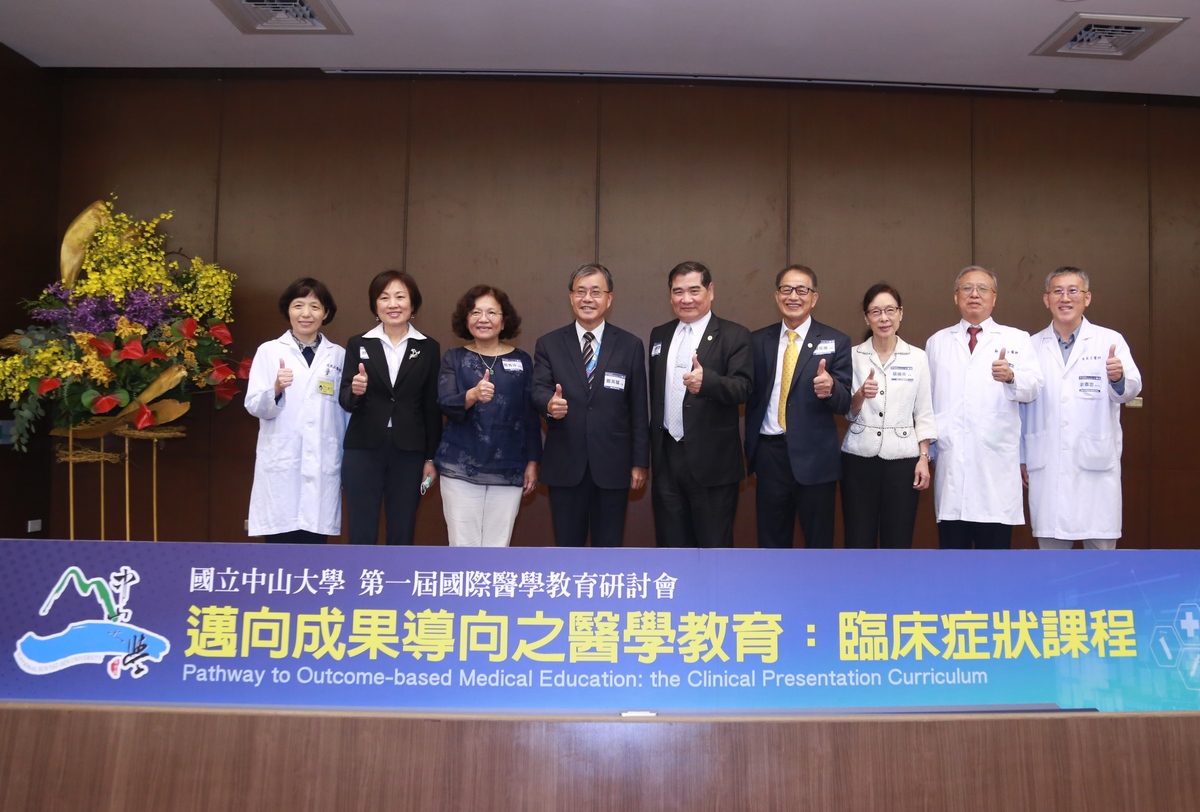
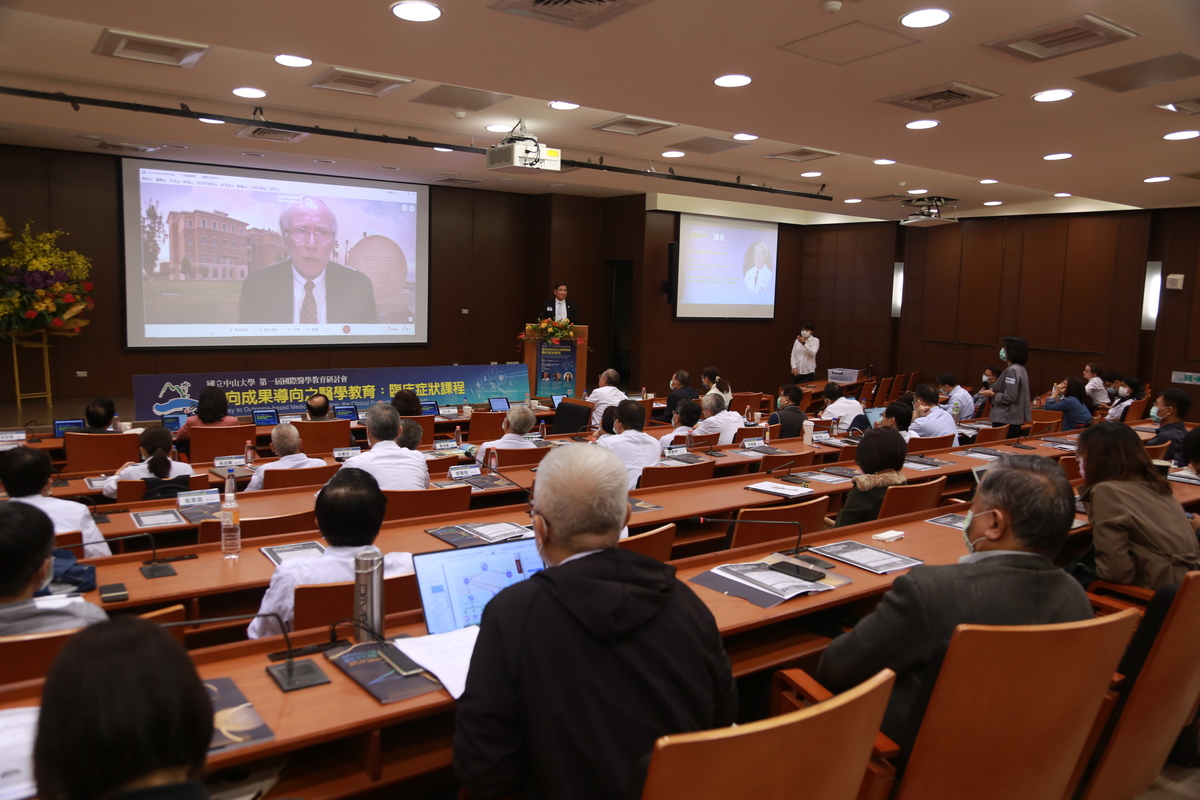
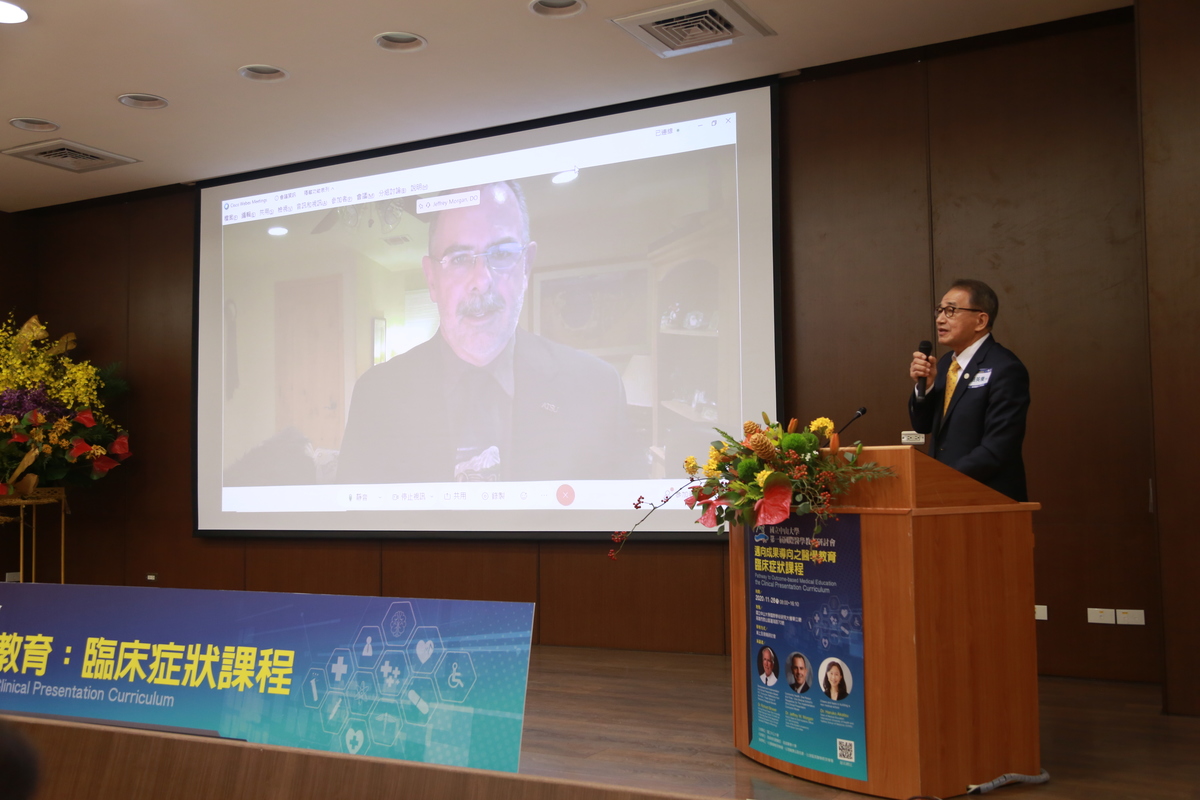
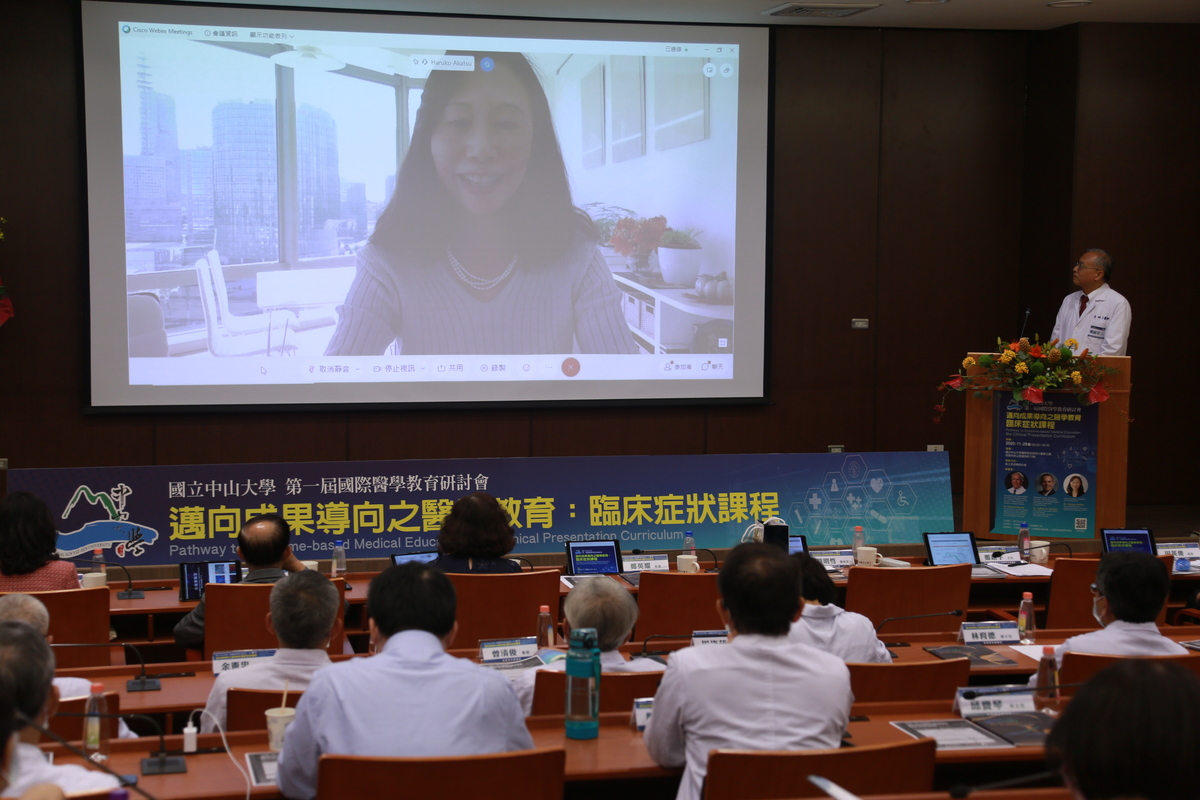
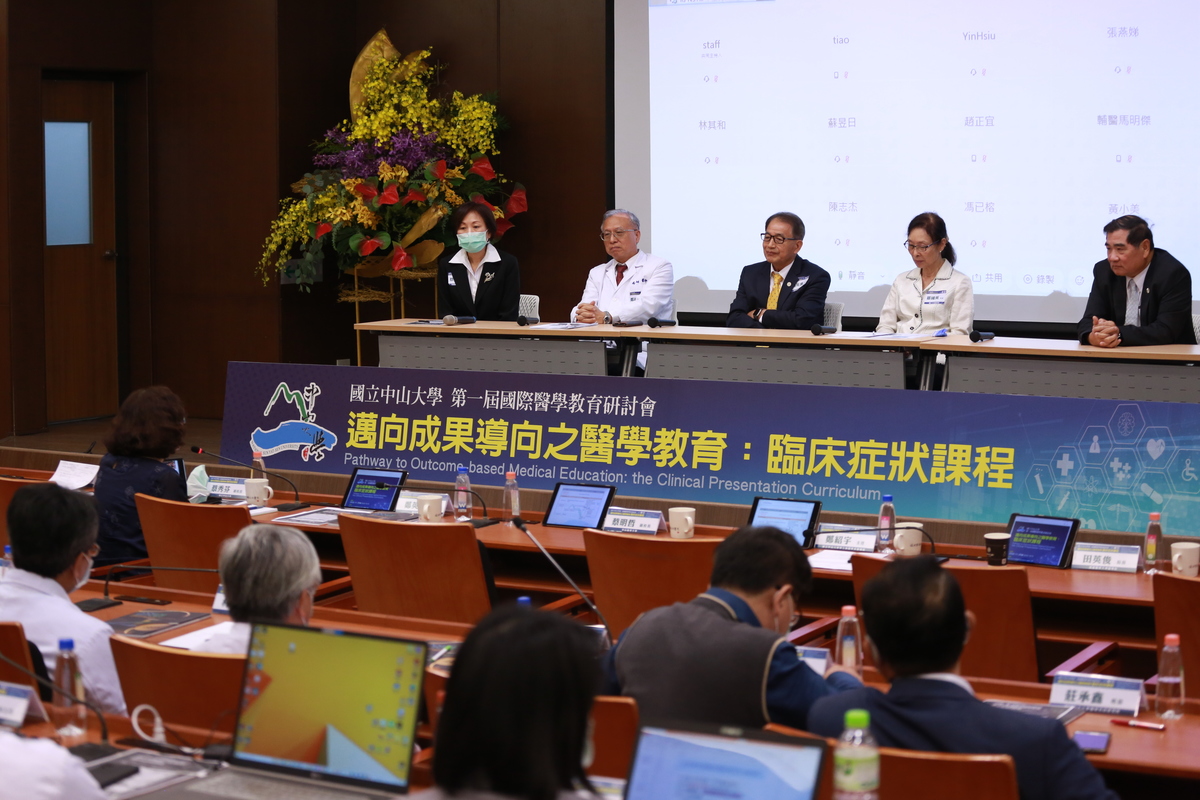

On November 28th, National Sun Yat-sen University organized the 1st International Conference in Medical Education: Pathway to Outcome-based Medical Education: the Clinical Presentation Curriculum, inviting three representatives of medical schools overseas to share their valuable experience in an online conference on implementing clinical presentation curriculum and establishing medical schools from scratch. The Ministry of Education has recently issued approval for NSYSU to continue establishing the School of Post-Baccalaureate Medicine.
NSYSU President Ying-Yao Cheng said that NSYSU School of Post-Baccalaureate Medicine will be the first public medical school established in southern Taiwan in the past 37 years. Dr. Haruko Akatsu, the Dean of Medical Education, International University of Health and Welfare (IUHW), Japan, presented the experience of the establishment of the School of Medicine at IUHW, founded in 2017 – 38 years after the government banned the establishment of new medical schools in Japan. As the first medical school established in the 21st century in the country, it decided to do things differently. In Japan – a culture where “silence is golden” and students are not encouraged to actively participate in class and ask questions, the School of Medicine took active learning as its guiding principle, encouraging the students to seek, understand, evaluate, choose, and integrate necessary information from the exponentially increasing medical knowledge. To adjust to students’ different learning preferences, the School decided to provide a variety of learning environments.
The Conference was an opportunity to discuss the experience of implementation of the clinical presentation-based curriculum that originated at the University of Calgary in the early 1990’s and will be adopted by NSYSU School of Post-Baccalaureate Medicine. Richard D. Brower, Associate Professor of Neurology and the Vice Provost of Texas Tech University Health Sciences Center (TTUHSC) at El Paso shared the successful experience with the clinical presentation-based curriculum at the Paul L. Foster School of Medicine (PLFSOM) at TTUHSCEP, established in 2009. He said that the clinical presentation-based curriculum is based on the principle that becoming an expert in clinical diagnostic reasoning requires a broad knowledge of relevant biomedical and psychosocial concepts. Brower mentioned the goals of the curriculum: strengthening basic science instruction, retaining a high degree of clinical integration, avoiding the pitfalls of problem-based learning (PBL), and fully incorporating basic principles of adult learning: learning knowledge and skills in the context of the intended application, integrated instruction, active learning strategies, expert-guided deliberate practice, abundant unscheduled time, frequent formative assessment and feedback, and spaced repetition. The students of the School develop and use clinical schemes – hierarchical decision trees and process worksheets that outline the steps in the diagnostic assessment of the clinical presentation. The curriculum brought success: the national norms in academic and clinical perspectives were achieved, despite students’ lower pre-admission scores attributed to social and economic factors and lower education opportunities.
The clinical presentation or scheme presentation model serves as the foundation of the curriculum at the School of Osteopathic Medicine in Arizona (SOMA) at A.T. Still University, committed to educating highly competent, compassionate osteopathic physicians and healthcare leaders through innovative academic programs and scholarships, with focus on whole-person healthcare, interprofessional education, diversity, and providing community-oriented primary care, said the Dean and Chief Academic Officer Jeffrey W. Morgan. He presented the challenges, successes, and outcomes of the implementation of the curriculum, comprised of approximately 120 presentations, which serve as a starting point for the generation of relevant curricular content; they may represent common patient complaints, abnormalities of physical examination, or commonly ordered laboratory studies. SOMA tries to respond to the shortage of workforce in the Community Health Centers and “to serve the underserved”.
The speakers also agreed on the importance of diversity in the learning environment. Dr. Akatsu said, “we believe diversity makes the group stronger”. The School of Medicine at IUHW not only employs international faculty and recruits top students from various regions by recommendation of local medical schools but also incorporates the knowledge of medical problems around the world and international standards into its curriculum. Dr. Morgan said that SOMA makes students from historically underrepresented groups candidates for admission and that having ethnically-diverse physicians serving in the community proves beneficial for improving the access to healthcare in communities.
NSYSU President Cheng said that in the past few years, the University was preparing for the establishment of the School of Post-Baccalaureate Medicine and that the Ministry of Education has recently issued approval for NSYSU to continue establishing the School of Post-Baccalaureate Medicine – a milestone in the development of the University. “If the University succeeds in establishing the College of Medicine, it will be the first public medical school in Kaohsiung, Pingtung, Penghu, and Taitung area in the past 37 years”, he said. The College will be committed to providing public-financed education to students, improving the healthcare situation in rural and indigenous areas and outer islands, as well as balancing out the disparity of medical resources between the north and south of Taiwan. President Cheng emphasized that the establishment of the School of Post-Baccalaureate Medicine, its innovative courses and education model will respond to the difficulties brought by the smart digital revolution in medical education brought by the fast advancement of healthcare and smart and digital technologies as well as the COVID-19 pandemic.
The Conference also included a workshop on clinical presentation curriculum construction and a panel discussion on innovative curriculum design. The participants of the Conference included Superintendent of Kaohsiung Veterans General Hospital (KVGH) Yaoh-Shiang Lin, Senior Vice President Shiow-Fon Tsay, Senior Vice President of Kaohsiung Medical University (KMU) Ming-Lung Yu, Vice President of Chung Shan Medical University Ming-Che Tsai, Dean of the College of Medicine at KMU Yin-Chun Tien, Director of the Provisional Office of NSYSU School of Post-Baccalaureate Medicine Shaw-Yeu Jeng, professors of medicine, physicians from all over Taiwan, and NSYSU faculty and staff members.
NSYSU President Ying-Yao Cheng said that NSYSU School of Post-Baccalaureate Medicine will be the first public medical school established in southern Taiwan in the past 37 years. Dr. Haruko Akatsu, the Dean of Medical Education, International University of Health and Welfare (IUHW), Japan, presented the experience of the establishment of the School of Medicine at IUHW, founded in 2017 – 38 years after the government banned the establishment of new medical schools in Japan. As the first medical school established in the 21st century in the country, it decided to do things differently. In Japan – a culture where “silence is golden” and students are not encouraged to actively participate in class and ask questions, the School of Medicine took active learning as its guiding principle, encouraging the students to seek, understand, evaluate, choose, and integrate necessary information from the exponentially increasing medical knowledge. To adjust to students’ different learning preferences, the School decided to provide a variety of learning environments.
The Conference was an opportunity to discuss the experience of implementation of the clinical presentation-based curriculum that originated at the University of Calgary in the early 1990’s and will be adopted by NSYSU School of Post-Baccalaureate Medicine. Richard D. Brower, Associate Professor of Neurology and the Vice Provost of Texas Tech University Health Sciences Center (TTUHSC) at El Paso shared the successful experience with the clinical presentation-based curriculum at the Paul L. Foster School of Medicine (PLFSOM) at TTUHSCEP, established in 2009. He said that the clinical presentation-based curriculum is based on the principle that becoming an expert in clinical diagnostic reasoning requires a broad knowledge of relevant biomedical and psychosocial concepts. Brower mentioned the goals of the curriculum: strengthening basic science instruction, retaining a high degree of clinical integration, avoiding the pitfalls of problem-based learning (PBL), and fully incorporating basic principles of adult learning: learning knowledge and skills in the context of the intended application, integrated instruction, active learning strategies, expert-guided deliberate practice, abundant unscheduled time, frequent formative assessment and feedback, and spaced repetition. The students of the School develop and use clinical schemes – hierarchical decision trees and process worksheets that outline the steps in the diagnostic assessment of the clinical presentation. The curriculum brought success: the national norms in academic and clinical perspectives were achieved, despite students’ lower pre-admission scores attributed to social and economic factors and lower education opportunities.
The clinical presentation or scheme presentation model serves as the foundation of the curriculum at the School of Osteopathic Medicine in Arizona (SOMA) at A.T. Still University, committed to educating highly competent, compassionate osteopathic physicians and healthcare leaders through innovative academic programs and scholarships, with focus on whole-person healthcare, interprofessional education, diversity, and providing community-oriented primary care, said the Dean and Chief Academic Officer Jeffrey W. Morgan. He presented the challenges, successes, and outcomes of the implementation of the curriculum, comprised of approximately 120 presentations, which serve as a starting point for the generation of relevant curricular content; they may represent common patient complaints, abnormalities of physical examination, or commonly ordered laboratory studies. SOMA tries to respond to the shortage of workforce in the Community Health Centers and “to serve the underserved”.
The speakers also agreed on the importance of diversity in the learning environment. Dr. Akatsu said, “we believe diversity makes the group stronger”. The School of Medicine at IUHW not only employs international faculty and recruits top students from various regions by recommendation of local medical schools but also incorporates the knowledge of medical problems around the world and international standards into its curriculum. Dr. Morgan said that SOMA makes students from historically underrepresented groups candidates for admission and that having ethnically-diverse physicians serving in the community proves beneficial for improving the access to healthcare in communities.
NSYSU President Cheng said that in the past few years, the University was preparing for the establishment of the School of Post-Baccalaureate Medicine and that the Ministry of Education has recently issued approval for NSYSU to continue establishing the School of Post-Baccalaureate Medicine – a milestone in the development of the University. “If the University succeeds in establishing the College of Medicine, it will be the first public medical school in Kaohsiung, Pingtung, Penghu, and Taitung area in the past 37 years”, he said. The College will be committed to providing public-financed education to students, improving the healthcare situation in rural and indigenous areas and outer islands, as well as balancing out the disparity of medical resources between the north and south of Taiwan. President Cheng emphasized that the establishment of the School of Post-Baccalaureate Medicine, its innovative courses and education model will respond to the difficulties brought by the smart digital revolution in medical education brought by the fast advancement of healthcare and smart and digital technologies as well as the COVID-19 pandemic.
The Conference also included a workshop on clinical presentation curriculum construction and a panel discussion on innovative curriculum design. The participants of the Conference included Superintendent of Kaohsiung Veterans General Hospital (KVGH) Yaoh-Shiang Lin, Senior Vice President Shiow-Fon Tsay, Senior Vice President of Kaohsiung Medical University (KMU) Ming-Lung Yu, Vice President of Chung Shan Medical University Ming-Che Tsai, Dean of the College of Medicine at KMU Yin-Chun Tien, Director of the Provisional Office of NSYSU School of Post-Baccalaureate Medicine Shaw-Yeu Jeng, professors of medicine, physicians from all over Taiwan, and NSYSU faculty and staff members.
Click Num:
Share
